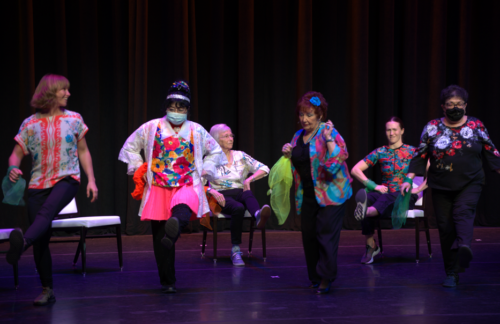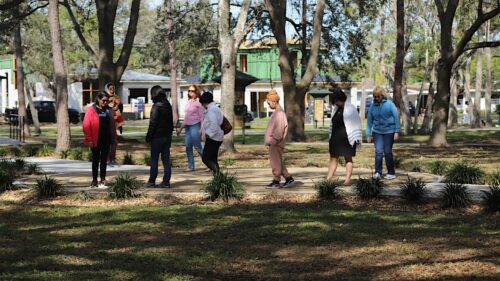Pilates Reformer 101
Just like clothing and hairstyles go out of style, the popularity of exercise regimes waxes and wanes over time. Pilates Reformer workouts, however, with its low-impact approach and highly effective toning and strengthening format, is an evergreen classic that counts millions of devotees across the country. According to a survey completed by the National Sporting Goods Association, Pilates had 5.8 million athletes participating in the exercise in 2021. At the Crosby Wellness Center at the Center for Health & Wellbeing, solo, duo and small group Pilates reformer classes with a team of expert instructors empower members and nonmembers with a wide variety of exercises that promote length, strength, flexibility, and balance. Keep reading to learn more about the exercise, and to find out why Pilates reformer classes at the Crosby Wellness Center may be the newest perfect-fit routine for you.
History of the Reformer
The Pilates reformer was invented by Pilates founder Joseph Pilates who used his time working during World War I to start developing a new approach to exercise – the start of what is known today as Pilates. Joseph Pilates also got the chance to work as a nurse, and according to the Pilates Foundation, “this gave him the chance to experiment by attaching springs and straps to hospital beds so that patients could start toning their muscles even while they were still bed-bound. Such were the origins of the first Pilates machines now known as the Pilates reformer.” The Pilates family emigrated to the United States in the 1920s and started teaching the first Pilates classes in their gym in New York in 1926.
Mechanics of the Reformer
The reformer machine is designed with a bed-like frame and platform. The platform section of the reformer where the participant sits or lays during the exercise is called the carriage. The carriage rolls back and forth between the frame depending on the exercise performed. The carriage is attached to the frame by a set of springs that control the resistance of the workout. The springs are changeable depending on the participant’s level of expertise, comfortability with the machine, and resistance preferred during the workout. In addition to the springs and carriage, straps are attached to the reformer to provide additional support and resistance during certain exercises. The loops on the end of the straps create tension for lower-body and ab-focused movements; they can also be used for balance and stability while performing exercises on the carriage. The straps have many different uses during a reformer exercise depending on if you are a beginner or in an advanced class.
Reformer Basics
Before your first Pilates reformer class, pack a small bag with a water bottle, a hair tie if you need it, and towel, and have your workout attire ready. It’s best to choose leggings or capris to avoid skin irritation while on the carriage. If you prefer shorts, pick options that are breathable, stretchy, and comfortable. You can also wear socks if you are uncomfortable with exercising on the reformer in bare feet. Barre or Pilates socks with grips on the bottom will help keep your feet in the correct placement while exercising. At first, the reformer might feel odd and unnatural, but after the first few classes, it will start to become comfortable.
Common Reformer Mistakes
While the reformer may look like an easy exercise, there are some common mistakes a beginner might make during their first classes. These include forgetting to breathe, using big movements to target smaller muscles, and too much or too little resistance. While some may forget to breathe during their initial classes, many class formats include breath coaching while exercising. This encourages participants to breathe correctly and incorporate mindful breathwork into the exercise. Using smaller movements during exercise helps to focus on the small and deep muscles that the workout is targeting. When choosing the correct resistance, make sure it’s not too little or too much. The correct amount of resistance depends on the person and the goal of their exercise. The best way to make sure you have the correct amount of resistance is to talk to your instructor. They will be able to give the best personal advice when trying to find the right resistance.
Benefits of the Reformer
Did you know that Pilates reformer classes help develop a strong core by supporting and strengthening the muscles of the torso, hips, and shoulders? That’s not all a reformer can do. Completing reformer exercises is also great for improving flexibility, balance, and relieving pain. The following are additional benefits to participating in reformer classes.
The reformer…
- Builds strength through pushing and pulling with your arms and legs against the resistance of the reformer springs, carriage, and body weight,
- Tones muscles while providing a full-body workout that develops a strong core, and
- Improves posture by realigning the body and spine resulting in improvements in alignment.
Pilates Reformer Classes at Crosby Wellness Center
Crosby Wellness Center, the state-of-the-art fitness facility inside the Center for Health & Wellbeing offers private, duo and small group reformer classes for both members and non-members. If you are interested in this outstanding Crosby amenity, please call (407) 644-3606 to sign up for one of the free reformer basics classes with a Pilates reformer Instructor. And, learn more about the Crosby Wellness Center Pilates staff HERE.






